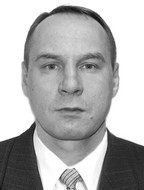Short-term effect of Semax 0.1% peptide neurotransmitter on archers' mental performance rates
Фотографии:
ˑ:
PhD S.V. Mukhaev1
Dr.Hab., Professor L.А. Semenov2
1Enisey Basketball Club, Krasnoyarsk
2Surgut State Pedagogical University, Surgut
The article analyses the ways to implement and operate modern sport technologies in the athletic training systems with an emphasis on their implementation and adaptation to new environments. The authors considered the technologies operation specifics versus their implementation and adaptation requirements in different physical education and sports sector domains to find the key logics and application principles for the modern sport technologies being successfully applied by the relevant athletic training systems in high-intensity sport disciplines. The logics and principles provide the theoretical and practical grounds to develop a sport technology implementation and adaptation mechanism applicable to new operation environments. A special emphasis was made on the logics of the modern sport technology application in high-intensity sport disciplines, with the application potential determined by the following: essential requirements and benefits of the technology in the context of the discipline-specific competitive process; operation efficiency of the applied technology in the new process environment conditional on its core being retained; nature of the applications in the context of theory and practice of the subject sport discipline versus the technology class etc.
Keywords: sport technologies, technology application logics and principles, theoretical and practical grounds for technology application.
References
- Alkhojali R.F. Vozrastnaya dinamika spetsialnoy podgotovlennosti basketbolistok. Dis. kand. ped. Nauk [Age dynamics of special fitness of female basketball players. PhD diss.]. Moscow, 1989, 139 p.
- Mekhrikadze V.V. O professii trenera, poiske idey i sprinterskom bege [Profession of coach, search for ideas and sprint]. Moscow: SportAkademPress publ., 2001, 164 p.
- Mukhaev S.V., Semenov L.A. Konkretizatsiya predmeta konversii na osnove vydeleniya razlichnykh klassov sportivnykh tekhnologiy [Conversion subject specification through classification of sports technologies]. Fizicheskaya kultura: vospitanie, obrazovanie, trenirovka, 2016, no.1. pp. 9-11.
- Mukhaev S.V., Semenov L.A. Osobennosti konversii peredovykh tekhnologiy v sport vysshikh dostizheniy, detsko-yunosheskiy sport i sportizirovannoe fizicheskoe vospitanie [Advanced technology conversion specifics in elite and youth sports and sportizated physical education]. Teoriya i praktika fiz. kultury, 2017, no.8. pp. 66-68.
- Portnov Y.M. Osnovy upravleniya trenirovochno-sorevnovatelnym protsessom v sportivnykh igrakh [Fundamentals of control of training and competitive process in sports games]. Moscow, 1996, 200 p.
- Ratov I.P., Popov G.I., Loginov A.A. et al Biomekhanicheskie tekhnologii podgotovki sportsmenov [Biomechanical technologies of athletic training]. Moscow: Fizkultura i sport publ., 2007, 120 p.
- Socha T. Zhenskiy sport [Women’s sport]. Moscow: Teoriya i praktika fizicheskoy kultury, 2002, 203 p.
- Yakhontov E.R. Fizicheskaya podgotovka basketbolistov. Uchebnoe posobie [Physical training of basketball players. Study guide]. 2nd ed., rev., sup. St. Petersburg, Olimp publ., 2006, 134 p.




 Журнал "THEORY AND PRACTICE
Журнал "THEORY AND PRACTICE